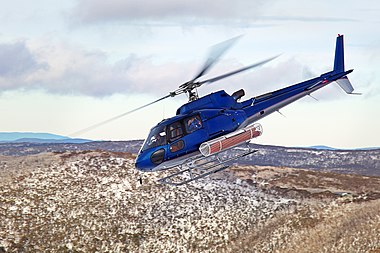Portal:European Union
Introduction
The European Union (EU) is a supranational political and economic union of 27 member states that are located primarily in Europe. The Union has a total area of 4,233,255 km2 (1,634,469 sq mi) and an estimated total population of over 449 million. The EU has often been described as a sui generis political entity combining the characteristics of both a federation and a confederation. Containing 5.8% of the world population in 2020, EU member states generated a nominal gross domestic product (GDP) of around US$16.6 trillion in 2022, constituting approximately one sixth of global nominal GDP. Additionally, all EU states except Bulgaria have a very high Human Development Index according to the United Nations Development Programme. Its cornerstone, the Customs Union, paved the way to establishing an internal single market based on standardised legal framework and legislation that applies in all member states in those matters, and only those matters, where the states have agreed to act as one. EU policies aim to ensure the free movement of people, goods, services and capital within the internal market; enact legislation in justice and home affairs; and maintain common policies on trade, agriculture, fisheries and regional development. Passport controls have been abolished for travel within the Schengen Area. The eurozone is a group composed of the 20 EU member states that have fully implemented the economic and monetary union and use the euro currency. Through the Common Foreign and Security Policy, the union has developed a role in external relations and defence. It maintains permanent diplomatic missions throughout the world and represents itself at the United Nations, the World Trade Organization, the G7 and the G20. Due to its global influence, the European Union has been described by some scholars as an emerging superpower. In 2012, the EU was awarded the Nobel Peace Prize. The United Kingdom became the only member state to leave the EU, in 2020; ten countries are aspiring or negotiating to join it. (Full article...) Selected article While most of the states in the world, and in Europe, are republics (have a directly or indirectly elected head of state), there are still six monarchies in the European Union, whose head of state (a monarch) inherits his or her office, and usually keeps it for life or until they abdicate. At the dawn of the 20th century, France was the only republic among the future member states of the European Union; the ascent of republicanism to the political mainstream only started at the beginning of the 20th century. The European Union's monarchies are: the Kingdom of Belgium, the Kingdom of Denmark, the Grand Duchy of Luxembourg, the Kingdom of the Netherlands, the Kingdom of Spain, and the Kingdom of Sweden. All six monarchies in the European Union are constitutional monarchies, which means that the monarch does not influence the politics of the state: either the monarch is legally prohibited from doing so, or the monarch does not utilise the political powers vested in the office by convention. There is currently no major campaign to abolish the monarchy in any of the remaining six states, although there is a significant minority of republicans in all of them. Selected picturePhoto: Benjamint444 The Eurocopter AS350 (AStar in North America) is a single-engined light helicopter originally manufactured by Aérospatiale (now part of Eurocopter Group). It is a popular model, being used worldwide in many civilian, law enforcement, and military organisations. One variant became the first helicopter ever to land on Mount Everest.
Did you know?...that Monaco, San Marino, and Vatican City all mint their own euro coins, with their own national symbols on the back, despite not being EU members? Selected cityZagreb is the capital and the largest city of the Croatia. It is located in the northwest of the country, along the Sava river, at the southern slopes of the Medvednica mountain. Zagreb lies at an elevation of approximately 122 m above sea level. In the census of 2011 the population of the city was 790,017. Zagreb is a city with a rich history dating from the Roman times to the present day. The oldest settlement in the urban area of the city is Andautonia, a Roman settlement in the place of today's Ščitarjevo. The name "Zagreb" is mentioned for the first time in 1094 at the founding of the Zagreb diocese of Kaptol, and Zagreb became a free royal town in 1242, whereas the origin of the name still remains a mystery in spite of several theories. In 1851 Zagreb had its first mayor, Janko Kamauf, and in 1945 it was made the capital of Croatia when the demographic boom and the urban sprawl made the city it's known nowadays. General imagesThe following are images from various European Union-related articles on Wikipedia.
TopicsFeatured contentFeatured articles
Featured lists
Featured contentGood articles
CategoriesRelated portalsAssociated WikimediaThe following Wikimedia Foundation sister projects provide more on this subject:
Discover Wikipedia using portals |
































































